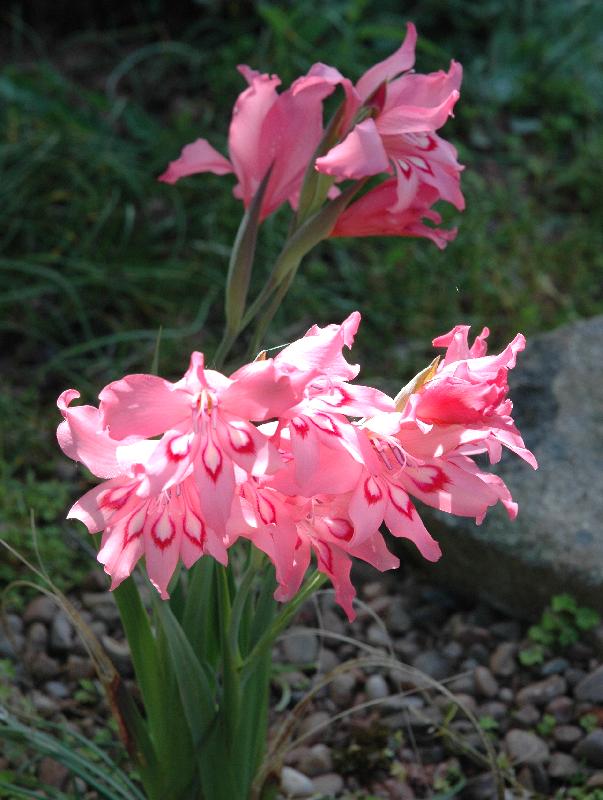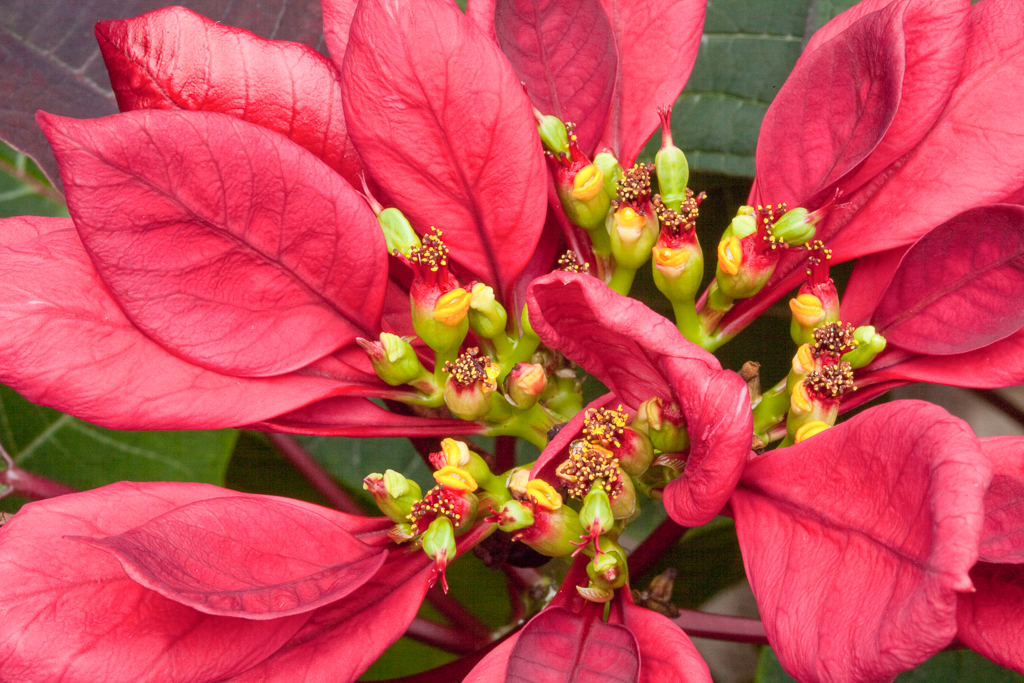
Gladiolus pappei on a Devon rock garden

Euphorbia pulcherrima

Euphorbia characias seedling
Lecture day at RHS Wisley
20 October 2023
Despite the storms that were forecast on this October Friday, we were blessed with breaks in the weather at all the right times after lunch and later in the afternoon.
We had some last-minute cancellations from members that meant our numbers were below 25 however those lucky enough to make it had a treat of a day. We had two lectures from respected plantsmen and horticulturists, John Fielding on the genus Euphorbia and Julian Sutton on dry season geophytes. Adding to our numbers we were joined for both lectures by many RHS student gardeners.
John started with Euphorbia. The many we know as garden or indoor plants are part of the fifth largest flowering plant family called Euphorbiaceae. It has approximately 7,500 species organised into 300 genera. The range of plants is huge from garden plants to idiosyncratic species which grow naturally in only one place in the world, right through to the supermarket stalwart Christmas poinsettia. Reminding us of the nature of this species, we saw a discarded poinsettia houseplant in Crete that had grown into a substantial tree. John showed us many examples of Euphorbia and its relatives and highlighted many garden-worthy examples. It was an excellent and extensive and insightful lecture.
We then had a good lunch, care of Wisley caterers Company of Cooks. Having been well fed, we had a chance to look at the gardens in the sunshine before the afternoon session.
Julian Sutton has been a lifelong plantsman and until recently ran Desirable Plants nursery in Devon with his wife Sarah. During this excellent lecture he paced us through dry-season geophytes, which we may tend to lump together as bulbs. The term correctly covers tubers, corms, and bulbs, all food stores for the growing plant to flourish and reproduce itself. It was interesting to see how the bulb itself is really layers of previous leaf tissue below ground, swollen and acting as a store of food. We looked at the dry summer season autumn winter flowering category and, due to the season, we had some super examples of many Nerine cultivars flourishing in the Wisley garden that day. Julian made note of garden-worthy plants and those which would drive you to distraction trying to grow, which is so helpful to the layman. We looked in depth at Crocus, Erythronium and Gladiolus plus other species. It was an entertaining and engaging lecture, and we were encouraged to experiment and be bold in planting, observe and copy the plants when/where they self-seed as it is a great educator. Then we had enough time at the end of the day for another sortie into the sunshine at Wisley which was looking resplendent.

